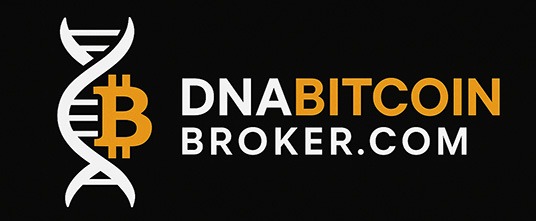“In digital finance, stability isn’t the absence of risk — it’s the presence of transparency.” – DNA Crypto Knowledge Base.
In 2025, Stablecoins have become the backbone of the digital economy.
Once dismissed as a niche crypto tool, they now move over $10 trillion annually across global blockchains — powering remittances, institutional settlements, and central bank pilots.
But as the industry matures, new questions emerge:
Which Stablecoins will survive Europe’s new MiCA regulation?
Can Euro-backed coins challenge the dollar’s digital dominance?
And how are regulators balancing innovation with control?
Learn more: Stablecoins and MiCA Regulation
From Experiment to Infrastructure
Stablecoins began as an elegant solution to crypto’s volatility — a digital representation of fiat currency backed 1:1 by reserves.
Today, they’re the settlement layer for blockchain-based finance, linking DeFi, exchanges, and real-world commerce.
In 2025, more than $160 billion in Stablecoins will be in circulation.
-
– USDT (Tether) remains the global leader, with over $110B supply.
-
– USDC (Circle) dominates regulated markets and corporate payments.
-
– EUROC and EURCV are defining the next frontier — Euro-backed digital money under MiCA supervision.
Stablecoins have evolved from crypto’s convenience to a core liquidity instrument in finance.
Explore: Stablecoins: The Digital Dollar of the Blockchain Economy
The European Turning Point: MiCA Changes Everything
Europe’s Markets in Crypto-Assets (MiCA) regulation, enforced in 2024, marked the world’s first legal framework for Stablecoins.
Under MiCA, issuers of Asset-Referenced Tokens (ARTs) and E-Money Tokens (EMTs) must:
-
– Hold full fiat reserves, audited and segregated.
-
– Provide real-time redemption rights for users.
-
– Operate under strict transparency and capital standards.
This regulation effectively outlawed unlicensed coins like USDT in the EU market — a headline move that forced exchanges and institutions to pivot toward regulated alternatives.
The result? Europe has become the most stablecoin-compliant market in the world, paving the way for institutional integration across banking and fintech sectors.
Learn more: Global Impact of MiCA
Euro Coin 2025: Europe’s Answer to the Digital Dollar
While the U.S. dollar dominates global stablecoin markets, Europe is catching up fast.
The launch of Euro Coin (EUROC) and Circle’s MiCA-aligned EURCV gives institutions a compliant option for on-chain Euro settlements.
In 2025, Euro stablecoin adoption is accelerating:
-
– Over €5 billion in monthly transactions across major European exchanges.
-
– Integration with SEPA Instant for real-time Euro conversions.
-
– Pilot programs by European banks exploring on-chain settlements.
Euro Coin bridges traditional finance with Web3 infrastructure — ensuring the Euro remains relevant in an increasingly digital global economy.
Learn more: Euro Coin 2025
The Dollar, The Euro, and the Battle for Digital Dominance
The stablecoin market now reflects global monetary politics.
USDC and USDT continue to represent the dollar’s digital reach, while Euro-backed tokens are Europe’s strategic response.
Key dynamics in 2025:
-
– The U.S. dominates liquidity, with USD Stablecoins accounting for over 85% of global on-chain settlement value.
-
– The EU is building regulatory credibility with MiCA as a global model for oversight.
-
– Asia and the Middle East are launching sovereign-backed tokens tied to gold, oil, and CBDCs.
In essence, Stablecoins are becoming the new reserve instruments of the internet economy — programmable, borderless, and politically symbolic.
Institutional Adoption: From Treasury to Transactions
Stablecoins are no longer just for crypto traders.
They’re transforming corporate treasury operations and cross-border liquidity management.
-
– Global Fintechs now use Stablecoins to settle remittances instantly at near-zero cost.
-
– Corporations use Euro- and USD-backed tokens for B2B payments and intra-group transfers.
-
– Banks and brokers leverage Stablecoins to execute digital asset trades without exposure to volatility.
According to the BIS 2025 report, 72% of major financial institutions now test or use Stablecoins for settlement efficiency.
Institutional Bitcoin Adoption
DNA Crypto: Connecting Regulation, Liquidity, and Trust
At DNA Bitcoin Broker, we help institutions navigate the stablecoin landscape with precision and compliance.
Our services include:
-
– MiCA-aligned Stablecoin brokerage and custody
-
– OTC liquidity for USD, EUR stable assets
-
– Cross-border settlement advisory for corporates and Fintechs
-
Portfolio diversification with regulated digital assets
We operate where innovation meets oversight — bridging the stability of fiat with the efficiency of blockchain.
The Bottom Line
Stablecoins have evolved from convenience tokens to the core rails of the new financial system.
MiCA has set the standard, the Euro is catching up, and global institutions are finally ready to participate.
In this new era, Stablecoins are not replacing money — they’re upgrading it.
And as the world’s liquidity moves on-chain, DNA Crypto stands ready to deliver what every institution now needs most: stability, compliance, and trust.
Image: Adobe Stock
Disclaimer: This article is for informational purposes only and does not constitute legal, tax, or investment advice.












